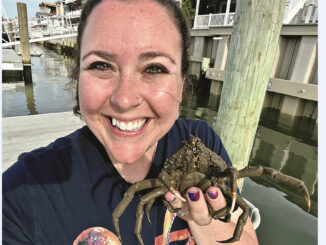
Red-Cockaded Woodpeckers
By Ellen Lambeth; Photos by Mac StoneBelieve it or not, fire helps this woodpecker survive. And the bird needs all the help it can get.

Red-cockaded (kah-KAY-did) woodpeckers live only in open pine woodlands of the Southeast (see map). And for the pine trees to have room to grow, they need fire to keep other kinds of trees away. So it’s true that fire is this little bird’s best friend.
In these areas, lightning sometimes sparks low fires that sweep through and quickly burn off grasses and shrubs. They also burn any “invading” kinds of trees. Meanwhile, thick bark and tough needles protect the pines from the flames. Once one of these good fires passes through, it leaves behind patches of bare sandy soil. And those are perfect places for the seeds of new grasses, wildflowers, and pines to sprout and grow.
Fussy Nesters
Most woodpeckers nest in just about any kind of dead tree. But red-cockaded woodpeckers nest only in living pines. When the birds peck into the live wood, sap oozes out. And gooey sap around nest holes keeps snakes and other hungry creatures from crawling in!

Birds in Trouble
Things started going badly for red-cockaded woodpeckers long ago, when so many big, old pines were cut for lumber. Then people took over the land for farms and towns.
In places where the woodlands remained, the problems didn’t end. There was a time when people didn’t realize how important fire was to the survival of these pines. So they rushed to put out any natural fires. But that just allowed other trees to grow in and crowd out the pines.
To the Rescue!
Now people are working hard to help red-cockaded woodpeckers make a comeback. They may let natural fires burn or set some “controlled burns” to imitate lightning-caused fires. They also work to save as much woodland as possible. They even ask landowners in the area to protect—and maybe even add more—pines on their properties.
People are also making the job of nesting easier for the woodpeckers. It can take months or even years to peck out a nest hole in the wood of a living tree! So the birds look for older pines, which are usually softer inside than younger trees. But there aren’t many of these old pines left. So people drill into younger trees to make artificial nest holes.
Another way scientists help is by moving some woodpeckers from places where there are already enough of these special birds to new places that need more. With friends like these, red-cockaded woodpeckers are getting a big boost. Here’s hoping their numbers continue to grow!
















